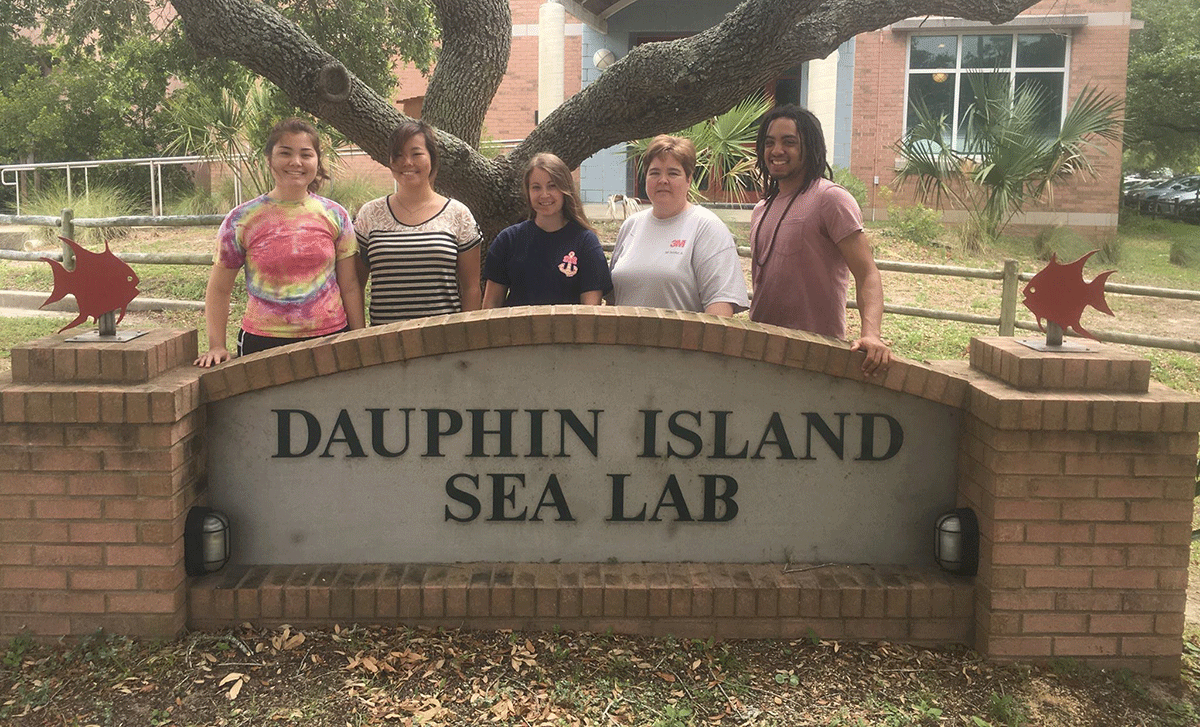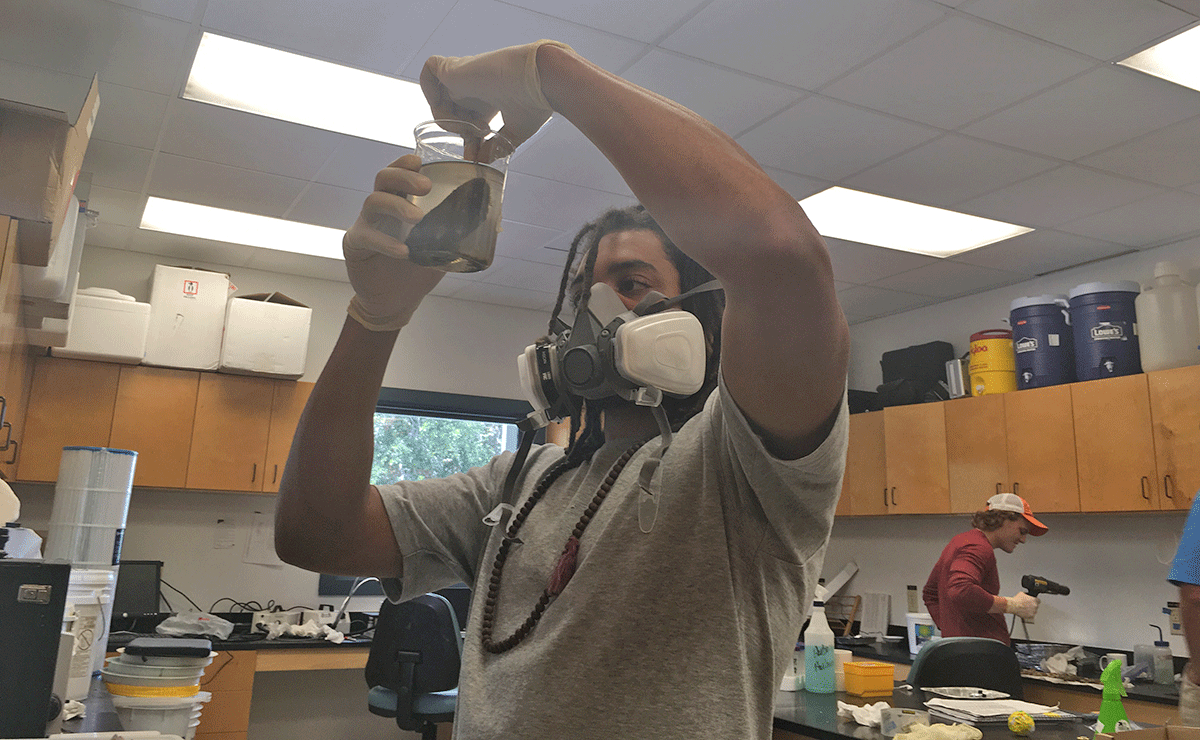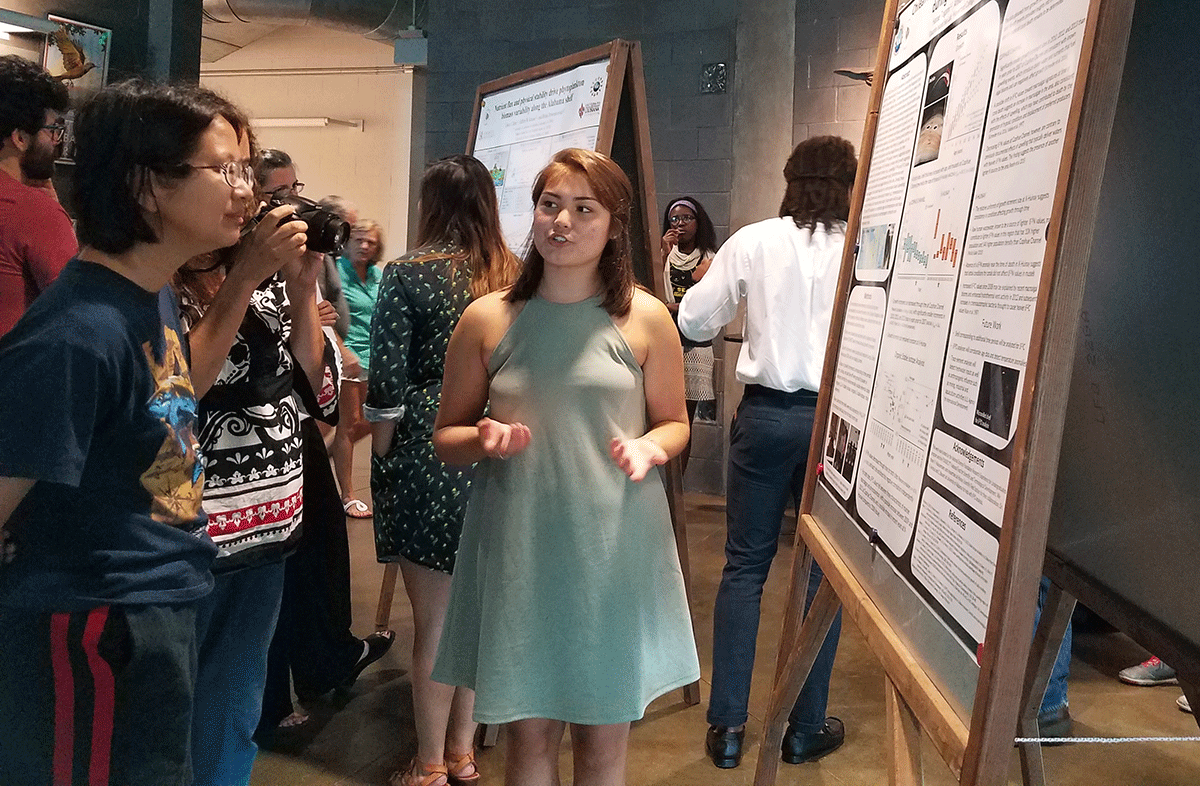
The Research Experience for Undergraduates hosted each year by the Dauphin Island Sea Lab offers a unique opportunity to junior and senior undergraduates. The REU program is an opportunity for student to take classroom knowledge of their research process and apply it to their scientific interests.
For many of these students, it's the first chance they have to experience the research process from beginning to end.
"For me, it’s great to see undergraduates come in and get into the mix of research and all the demands of a field season," Dr. Bill Walton, who serves as a DISL faculty mentor to the REUs. said. "I also love seeing the point where a student starts to make the project his or her own."
The 2017 REUs selected were Rachel Pugh, Mississippi Gulf Coast Community College; Jenny Rhee, University of Louisiana, Lafayette: Marnie Tabor, Athens State University; Hanae Togami Haverford College; and Harrison Watson, Jackson State University.
Each REU was paired with a faculty member to mentor them during the 10 week program. This year's faculty participants were Dr. Ruth Carmichael (Togami), Dr. Bill Walton (Pugh and Watson), Dr. Kelly Dorgan (Pugh), Dr. Brian Dzwonkowski (Rhee), Dr. Jeffrey Krause (Rhee and Tabor), and Dr. Just Cebrian (Tabor).
Students engaged in the REU program have an opportunity to customize their experience based on their unique research interests.
Rhee spent a large part of her time analyzing physical and biological data collected between 2009 and 2011 using Matlab software. Her mentors, Drs. Krause and Dzwonkowski, said she compiled years of data into excel files and found some interesting relationships between chlorophyll concentrations and stratification.
"It's really exciting to see someone transforming this data into information about our estuarine/coastal system," Dr. Dzwonkowski said.

"I enjoyed learning how to program using MatLab, and exploring the broad range of science questions that I can ask involving this data set," Rhee said.
Rhee added there are plans to continue the research, and possibly develop a manuscript for submission to a peer-review journal.
Togami, under advisement from Dr. Carmichael, took on a piece of a larger project aiming to identify the causes and effects of two mass coral deaths in the Chilean Patagonian fjord. She worked with samples of bivalve shellfish from Chile sent to the Carmichael lab for analysis.
"I love that I had the chance to make decisions about my project, and shape it based on the knowledge I've gleaned through background readings and discussions with Dr. Carmichael," Togami said.
For Watson, who worked with Dr. Walton at the Auburn Shellfish Lab, his research worked to fill a gap left by 2016 REU Charlotte Shade's research. Shade's research looked to find a way oyster farmers could avoid having mud worms in the shells of oysters they are growing. She found that treating the oysters with a quick brine dip would get rid of the worms, and by raising the oysters in the intertidal then significant reinfestation would be prevented.
The question Watson hoped to answer with his research was how long it takes for the oysters to recover and patch up their shells after the brine dip. The experience gave Watson a better understanding of applied research.

"I have participated in several activities both in the field and in the lab that has directly attributed themselves to that better understanding of the scientific method I was looking forward to when joining the program," Watson said.
Pugh also worked with Dr. Walton. She created a force sensor to determine how much force is needed to both shuck an oyster and break blisters caused by mud blister worms inside the oyster.
Pugh and Tabor had the chance to begin their summer with Coastal Louisiana Silica Cycling (CLASiC) research cruise in early May with the Krause and Cebrian Labs.
Tabor used samples collected from that cruise to set up one of her two experiments with her mentors, Drs. Cebrian and Krause.
"We are excited not only for the opportunities it opens for her professionally, but how she has catalyzed a collaboration between our labs," Dr. Krause said.
Tabor agreed the experience had a significant influence on her and her plans to return to the Dauphin Island Sea Lab to complete her B.A. in biology with a minor in marine science.
To learn more about the REU program at the Dauphin Island Sea Lab, visit disl.org/univ-prog/nsf-reu.